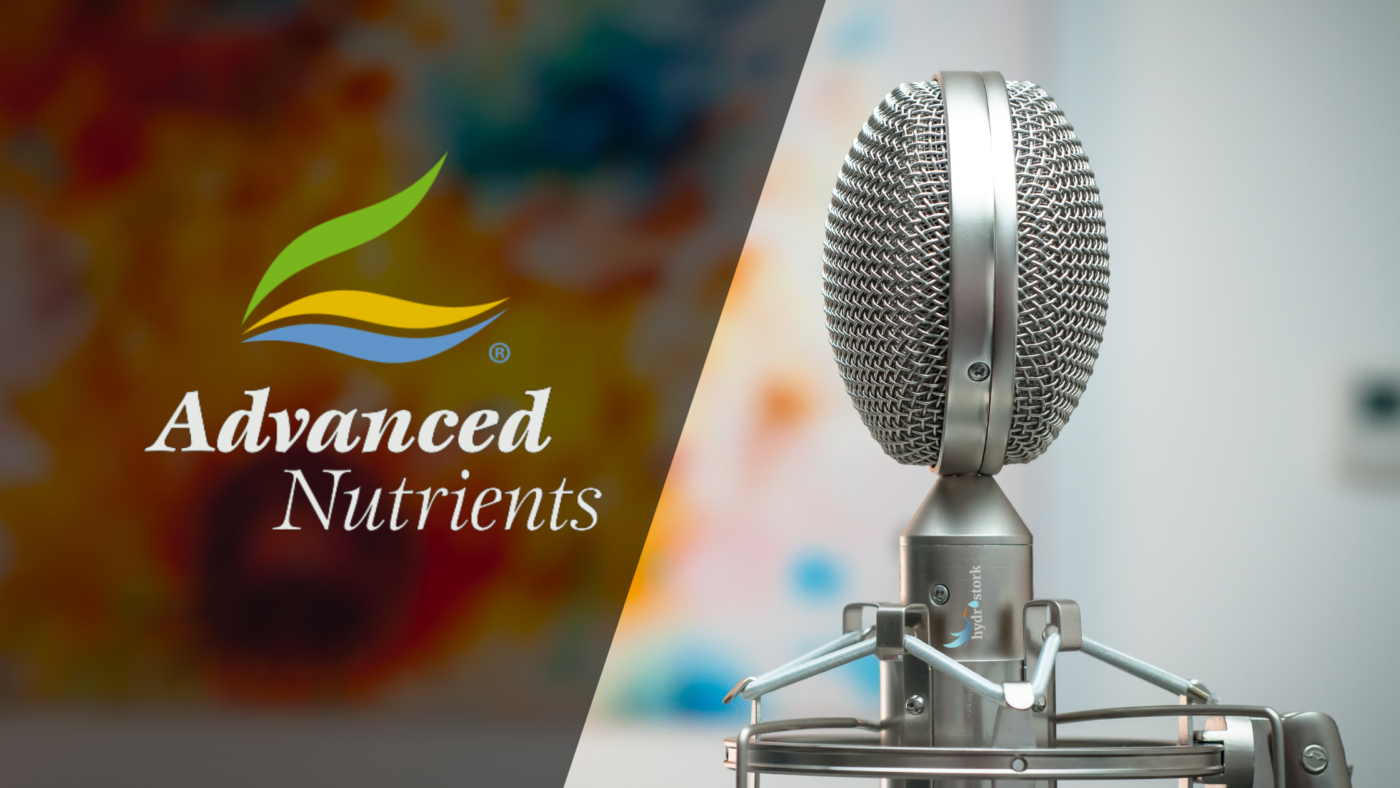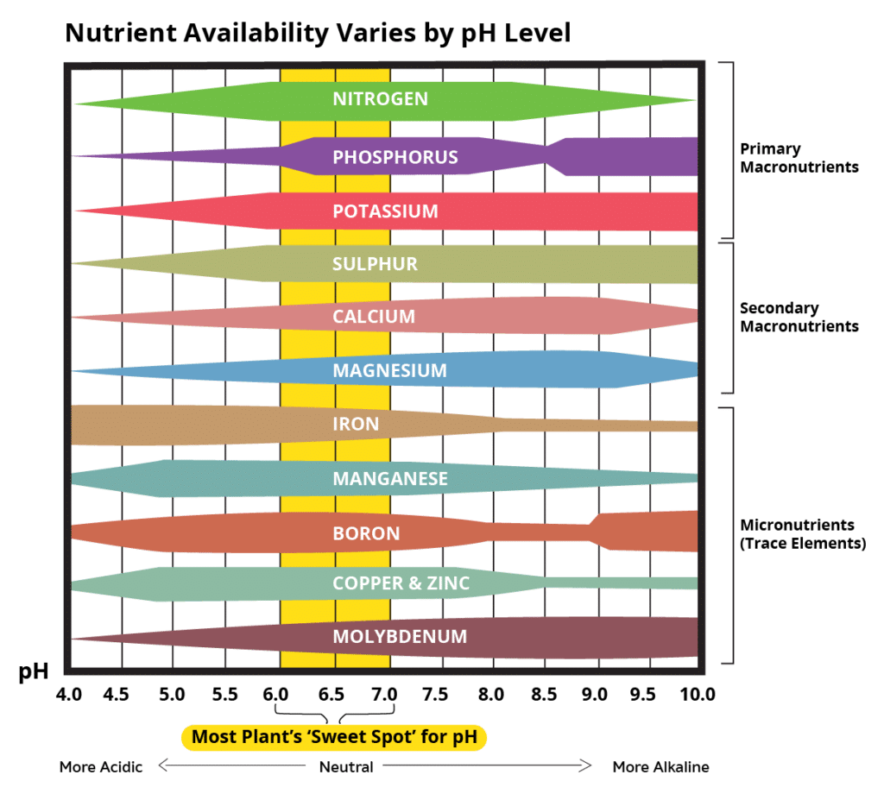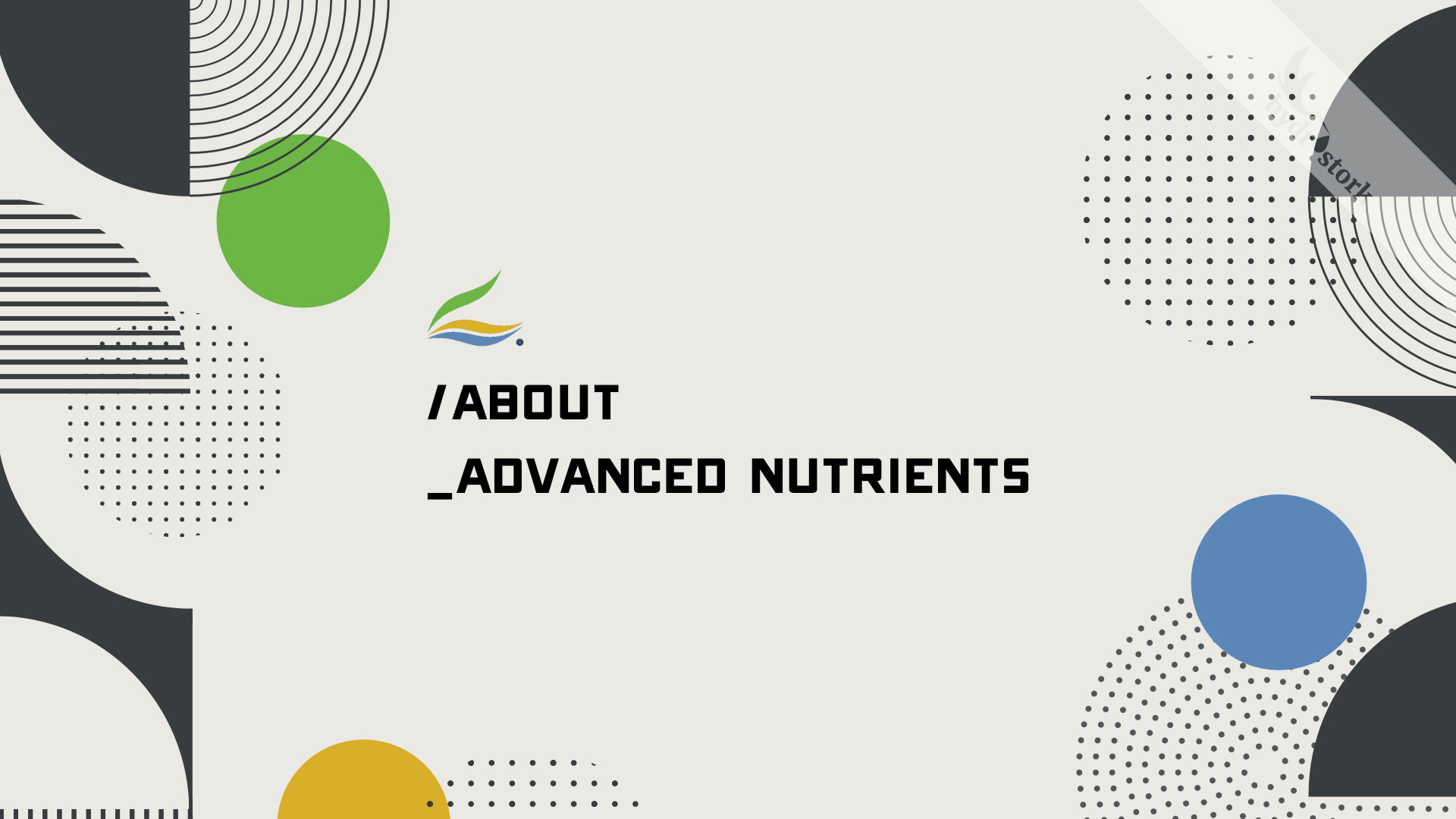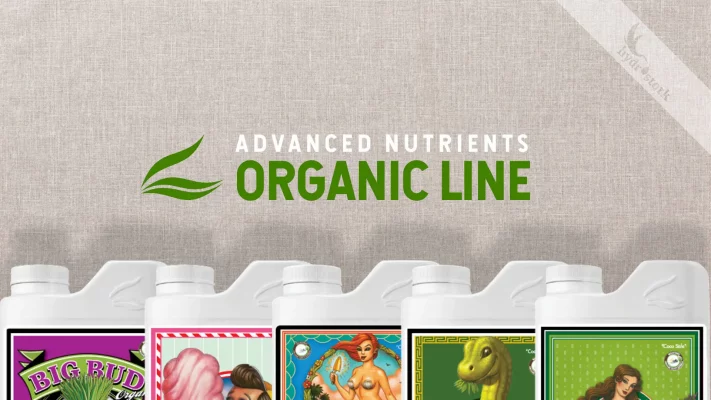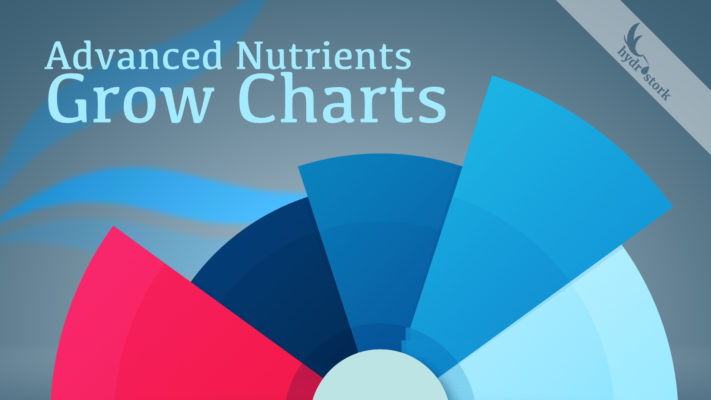“When it comes to growing, you’re essentially God of environment. ”
How amazing would it be to have a conversation with a Master Grower who’s a pro at using Advanced Nutrients? That’s exactly what we did!
Many growers have questions about the Advanced Nutrients products and their best application. We were lucky enough to sit down with a Master Grower and discuss the most common topics. From how chelates work to what base is best for new growers, we received some extremely valuable information. Speaking to someone who’s experienced in using the Advanced Nutrients range can really simplify complex ideas and shine a light on some common misconceptions.
We’re very excited to share this interview with you. We hope you enjoy it as much as we did.
Interview
Hydrostork Team: Thanks for meeting with us! Let’s get started with our first most common question. If I’m a grower, why should I use Advanced Nutrients? There are a lot of brands that have simpler lines. They’re not so expensive. It looks like Advanced Nutrients has a lot of products and the compound prices are higher. Why should I use this brand?
I’d say some of the biggest parts are: Number one, the testing, and the fact that it is more plant-specific. There are other brands that make those claims, but just because of Advanced Nutrients’ tenure in the industry, they’ve had quite a significant head start at that.
Second thing, the quality of components. Right now, the prices for raw ingredients for fertilisers are through the roof. So most companies build the fertiliser to the bare minimum of quality. That would be sufficient for the role they’re trying to sell it for. Advanced Nutrients kind of takes the opposite approach.
The built-in price point is what you’re actually paying for; it’s just the quality of raw ingredients. And you want to think about quality, considering you’re going to be composting the material or possibly eating it.
So the products are designed around the specific plant, with a unique set of components, the ratios and how they relate to each other, versus the standard hydroponic recipes some other companies use. At the same time, people go to Advanced Nutrients because they’re looking for a quality product.
Advanced Nutrients Expert Grower
Hydrostork Team: Advanced Nutrients has a lot of bases. It’s difficult to pick the correct one, especially for new growers. If I’m new to growing, what’s the best base for me, and why is that?
Normally, the answer to that question is always going to be Sensi Grow and Sensi Bloom. They’re part of the pH Perfect family, which uses the pH-perfect technology that I’ll explain in more detail a bit later.
These are some of the most premium products, Sensi A/B Grow and Sensi A/B Bloom. There is an A and B formula for the vegetative cycle, Sensi Grow. That’s your leafy growth. You’re putting on a stem, putting on leaves, putting on business, and the nutrient spectrum is geared towards the plant’s needs.
With Sensi Bloom, the plant is in its reproductive cycle. So it’s building flowers; in theory, it thinks it’s building seeds. So it needs the resources. It needs a richer spectrum just to build the flowers out.
So it’s a little bit different than some of the three parts we’re going to talk about in a second. But at the same time, you get the advantage of the two-part product from the pH Perfect line. It’s a top-shelf, high-quality nutrient that’s good for entry-level growers, but also for large-scale commercial growers who want to use a liquid.
Advanced Nutrients Expert Grower
Hydrostork Team: So what’s the difference between three-part and two-part? Certain people say to use the three-part, Grow, Micro, Bloom. You’re saying use the two-part Sensi. And where does the Connoisseur fit in the whole picture?
Let me start with Connoisseur. Connoisseur is almost like a premium version of the Sensi. And Sensi is already a very premium nutrient. So to explain Connoisseur, we need to envision the ideal grow room. Essentially, you’ve got CO2 injection, an air conditioner on the wall, etc.
When it comes to growing, you’re essentially God of the environment. So for example, some growers do air in and air out, pumping fresh air into the room. And there’s nothing wrong with that, but you are walking away from perfect at that point. Because humidity could be high, the outside temperature is going to be variable. So your plants aren’t always going to be in that optimal range. And plant growth is all about CO2 assimilation. Little holes on the leaves opening up, absorbing CO2, releasing oxygen. People need to visualise the plants in front of them as carbon.
So why Connoisseur? Connoisseur is for that perfect grow where you’re injecting CO2, and your temperature and humidity are perfect. So those little holes in the leaves are in that perfect absorption zone. That’s where Connoisseur is going to be the best fit. Many growers tend to gravitate towards the fanciest products. They invest in nutrients and lighting as the solution to all their problems.
But for some people, this product may be a bit too much. Connoisseur is for the dialled-in grower, for the grower who ideally has been running Sensi for a while. Connoisseur really shines for the grower who understands their genetics, has built a completely controlled room where every facet of the environment is controlled, etc.
Whereas, Sensi is a better fit for that commercial grower who’s maybe in a larger facility where sometimes things are a little bit looser. Or maybe you’re not familiar with the plant’s genetics. Because one of the biggest things in a grow room, too, is just knowing how long to veg a certain set of genetics. Because you’re going to get a stretch when you switch to the flowering stage. So it’s about timing and knowing how to run plant density per light and things like that.
Advanced Nutrients Expert Grower
Hydrostork Team: Some people say that Connoisseur is dangerous for people that are not experts in growing. They say that you can destroy your crop if you don’t have the experience to use it. And that’s why we should use Sensi. Is there a difference between them that penalizes you when you use Connoisseur without being an expert grower?
I like to use a diagram which shows how everything in the grow room is interconnected and affects overall nutrient absorption. There’s a red line that shows where you are now in terms of current conditions.
So I use that diagram to explain simple factors like runoff and soil. For example, when you get less runoff, salts build up and that red line moves down to the left. So a simple problem like not having good runoff could be exacerbated a lot quicker with something like Connoisseur. It’s not dangerous but if you’re doing things that are incorrect in the grow room that are mildly hurting you, you may notice them a bit more with Connoisseur. For example, things like the occasional yellow leaves that you could otherwise be putting up with.
Advanced Nutrients Expert Grower
Hydrostork Team: What about the difference between the two-part Sensi and the three-part Grow, Micro, Bloom?
Great question. Historically, the original liquid nutrients for this genre of growing have been three parts. So that’s one way to look at it: a lot of growers just prefer the three-part format. Another way to look at it is auto-flower growers.
With autos, you’re visually watching the plant in order to switch nutrients around. So you’re like ‘OK, I’m seeing some flowering symptoms now, I’m gonna switch to a bloom nutrient’. You don’t have to watch out for the light period when you’re going into flower. You can just run the same 3 bottles from start to finish, so the three-part is really friendly for auto growers as well, it’s a lot more forgiving. So basically, it appeals to legacy three-part growers and auto growers.
Advanced Nutrients Expert Grower
Hydrostork Team: So, Advanced Nutrients has other bases as well. Jungle Juice is 3 parts. There is also Iguana, which is organic. What about those?
Again this has to do with the three-part grower. Jungle Juice has some superiority over older series, and it’s also offered at a cheaper price and higher quality control. So that’s their way of inviting people to save money, essentially. You could consider it a replacement for all the old-school three parts out there. People see that it’s sometimes the lowest priced one available, so they think ‘OK, it’s entry-level.’ That’s not really the case. You can run all three parts differently. It’s a science kit, there are a million different recipes. You have to adjust the pH on it, you can use the three bottles in different ratios, but there is a specific niche of growers that like that particular approach.
And now about Iguana Juice. It’s organic, with carbon-based sources of nutrients. You’ve got a grow bottle, a bloom bottle, and they’re ready to use. Unlike mineral nutrients, they’re not separate bottles where you need to combine the concentrates and add them to water. It’s an apples and oranges argument between organic and mineral nutrients. But Iguana is organic and some people really prefer the taste of a plant grown with natural organic.
Advanced Nutrients Expert Grower
Hydrostork Team: Speaking of combining bottles. Let’s get back to Sensi for a moment. Sensi is a two-part – can you explain why there is an A and B for veg and A and B for bloom?
This applies to all the multipart mineral nutrients, a.k.a. synthetic nutrients. It’s a very concentrated solution of minerals for the plant. Now, because it’s so concentrated, they are trying to get it in the smallest bottle possible, while still keeping the bottle stable. If both A and B were in the same bottle, certain components would bind to each other, creating a new molecule. These compounds may not be ideal for the plant. So, in storage, they need to be separate. Once you add them to water as directed, there is enough water to keep them separate and they’ll be completely fine. It’s stable for a long period.
With organics, on the other hand, it can be one part because you’ve got things like plant extractions, fish extractions, such as fish hydrolysate, etc. You don’t have mineral salts. So you’re not going to get the same binding up.
But all proper mineral nutrients will always be divided up in two. And you can use this as a kind of a tool as well, because if you see a mineral nutrient on the market from another company and it’s a single part, usually they’re using some sort of workaround. For example, it’s missing some nutrients that have to be compensated for by using a soil that they’re selling.
Advanced Nutrients Expert Grower
Hydrostork Team: Yes, I understand. OK, so can you explain the pH Perfect technology to the Advanced Nutrients users?
Absolutely. It works severalfold. One of the ways nutrients make themselves available to the plants is through components called chelates. That’s EDTA, DPTH, etc. They have their own molecules. In the manufacturing process, an atom is taken that wouldn’t make it into the plant normally. Let’s use EDTA and iron as a hypothetical example. Once chelated, Iron EDTA is now its own compound and that could be absorbed by the plants.
And this is the case for a lot of these elements. Some of them don’t even need to be chelated, but chelating them does help with absorption. Let’s say Calcium. It really only gets absorbed in a really tight window. If you chelate it, that opens up the absorption window a bit. And if you provide multiple chelated Calcium sources (e.g. calcium EDTA, calcium DPTH, etc.), this widens the uptake opportunity.
Advanced Nutrients Expert Grower
Hydrostork Team: And how is that effect achieved?
That’s accomplished in a number of ways. Number one is non-ionic surfactants. The surface area of the liquid is interacting with the plants’ roots a lot better. So that’s increasing uptake opportunities. Humic and fulvic acid are also used, which put simply, are organic substances from the earth. They act as natural chelators. So they facilitate the nutrient uptake into the plant. Then, there are amino acid complexes. They’re manufactured complexes that act as delivery vehicles for certain elements as well.
So you’ve got all these different pathways that the nutrient is being delivered.
And this is where this matters the most: People might see their pH down at say 5 or up at say 7, which is not optimal pH, but they’re still completely safe with the pH Perfect technology. The other thing is that there are pH buffers. When you mix the pH-perfect nutrients with water (as long as it’s a reasonable source of water), it’s going to take you to a sweet spot in your pH levels. An ideal mid-range of let’s say, 5.5 to 6.5, for example. So that optimal pH level, combined with the other technology I mentioned, guarantees a good nutrient uptake.
Advanced Nutrients Expert Grower
Hydrostork Team: Another one of the recurring questions: What’s NPK? Why is it important?
It’s important and it’s not important, if that makes sense. It’s mostly a regulatory thing. NPK is just nitrogen, phosphorus, potassium. It represents the percentage of each one, for example, 1-3-5.
The issue with that, though, is that you could have two bottles from different manufacturers with an NPK of 4-0-0. So they both should contain 4% nitrogen. However, one bottle may be using a higher quality of nitrogen or it’s more plant-absorbable, and the other may not. Hence, one bottle might burn the plant, while the other is going to make the plant grow deficient. So when they read 4-0-0, some people may think they’re getting the same thing, but they’re not. A bottle with a lot lower numbers could actually be performing better than a bottle with the higher numbers, just because those lower numbers are much higher quality forms of those elements. Bottom line is, that it’s not just about the numbers of the bottle, but the quality of those components.
Advanced Nutrients Expert Grower
Hydrostork Team: OK, last question. What base is good for what medium?
So, Coco Choir is the one outlier pretty much. That’s why the Connoisseur and Sensi both have Coco Coir versions.
Coco Coir is basically like a hydroponic soil, made from coconut husks. There are some advantages to it. It’s quite renewable versus peat moss which has a longer regeneration period. You can feed it very often. So performance-wise, Coco is almost like rockwool. But there are also a lot of advantages over rockwool. It’s easier to dispose of, a little bit more forgiving when it dries out, etc. So, the big nuance with Coco is just to keep things super simple. Calcium and magnesium need to be tweaked a little because Coco tends to lock onto that before the plant can absorb it. Also, iron, zinc, and some of the microelements get tweaked as well. So there are Coco versions of the Connoisseur and the Sensi.
Beyond that, realistically, anything can be used in any grow medium. Organic nutrients, in general, don’t always jive that well in hydroponics. It’s doable, but it’s messy. It’s just when plant extracts, fish extract, etc., are circulating in water, they tend to form a soup skin type of thing. Hydroponics and organics are both cool things when you’re getting into growing, but you don’t want to combine them unless you know what you’re doing.
Other than that any nutrient can be used in any grow medium. However, every grow medium has specific rules. For example, if you’re growing in hydro and you’re just mixing some water, recirculating it and you changing it once a week – and maybe that worked out fine. And then you get into soil, but you put four weeks’ worth of food in there and you’re not getting good runoff. So immediately you burn your plants up because of the salt buildup. So you may think ‘Oh no, this doesn’t work for soil’. But that’s not exactly right. It’s just a nuanced situation. There are many grow-medium-specific things that you need to keep in mind. You can use everything in every grow medium, but you want to know your grow medium well.
Advanced Nutrients Expert Grower
This has been great, thanks so much for your input! We really appreciate it.
Our Master Grower guest was able to dissect a range of topics, from the difference between Sensi, Connoisseur, and Grow, Micro, Bloom, to Advanced Nutrients’ proprietary pH Perfect technology. We learned why NPK ratios matter and why they don’t, why mineral nutrients are packaged as A and B parts, and much more.
We hope this interview has made it easier for you to navigate the Advanced Nutrients product range and get the best of their nutrients. And if you have additional questions, the Hydrostork Team is always happy to address them.

